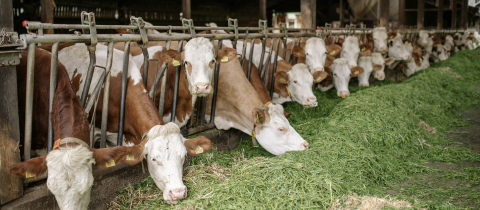If you’ve ever spent any time in Ireland, you’ll know that heritage is highly marketable; from the-over-the-top Carroll’s gift shops, to the bright green tour buses transiting loads of tourists around the countryside, people seem to be obsessed with all things Irish. As a result of the mass emigration out of Ireland since the 15th century, it’s not surprising that many people feel a great connection to the country and the culture, claiming their own Irish heritage somewhere along their family line. Though only 4.6 million people actually live in the Republic of Ireland, there are an estimated 80 million people worldwide who claim some kind of historical heritage. My born and raised friend from Dublin once joked: “When an American tourist tells you they’re actually part Irish, just smile, nod, and take their money”. It turns out heritage is not only marketable, but also very lucrative.
And for the bargain price of $109 you can find out just how Irish you actually are, at least that’s what popular companies like AncestryDNA and 23andMe advertise. All you have to do is send the company a sample of saliva from which they will extract DNA and subject it to analysis. Back comes a report detailing ancestry with suggestions of possible relatives as well as comments about various lifestyle factors. But is the information gleaned from these genetic tests reliable?
Ancestry services would seem to be particularly appealing in a country like Canada that was built on immigration. Understandably, many people would be expected to be interested in finding out about their own unique history, perhaps discovering unexpected national links. The genetic tests have only recently become possible thanks to advances in second generation gene sequencing, making the reading of smaller, important parts of the genetic code easier and cheaper. The real trick is finding patterns in gene sequences that can be compared with those that have been assembled in data banks from various human populations. Commonly, Y-linked genes (from the father), mitochondrial DNA (from the mother), or autosomal DNA (from both maternal and paternal blood lines) are sequenced and compared. Once certain patterns in gene variation such as location, frequency, and duplications have been identified, assumptions can be made about what a particular tidbit of genetic code (called a haplotype) means. For example, the closer that two distinct gene sequences are to each other along the strand of DNA, the more likely it is that they were inherited together from one’s parents.
Genetic sequencing tests can reveal information about ethnicity by virtue of matches with sequences documented in various geographic and ethnic populations. A percentage of a particular ethnicity is calculated by the closeness of one’s genetic code to known members a bloodline. Sharing enough haplotype blocks with another person increases the likelihood of common ancestry, but the precision is greatly lost past 1st degree relatives.
Strictly speaking, these tests can produce pretty valid results and are used frequently in population statistics and epidemiology. The problem is these tools were designed to make broad probabilistic statements about human populations on a large scale, and not about individuals. Thus the information these companies are providing about a single person are subject to many assumptions and limitations.
For example, there are particular sequences which are more common in certain ethnic subsets, particularly when looking at East Asians, Native American’s, Europeans, and Africans. Thus when certain blocks of code pop up in a sample of DNA, researchers assume it was inherited from the most likely source. In reality, it is possible that it was inherited it from a more unlikely population. The poor resolution of the tests has resulted in many false positives and unreliable results and it is for this reason that many scientists advise consumers against using these tests for anything other than interesting story telling.
DNA analysis is often misinterpreted by mainstream media. It is true that researchers can read all parts of a genetic code, but the fact is that there are many stumbling blocks in interpreting the massive data in a meaningful way. Even when it comes to determining eye colour, the genetics are more complicated than what is usually presented in high school science class.
It’s really important to realize that the data provided by genetic testing companies is of a correlational nature and does not provide a causal link between one’s DNA and ethnicity. Geographic, racial, and ethnic labels are social categories and have little to do with genetic ancestry. Populations are not easily defined, they often overlap and get mixed by intermarriages.
Heritage is an interesting element of our identity and should not be taken lightly, but using genetic testing as proof of ancestry is misguided. Consider also that these tests may reveal something about ancestry, but cannot take upbringing into account. For all you know you may indeed have a great great grandmother of Mexican ancestry as suggested by a genetic test, but if you were born and raised in France you are not likely to have an urge to buy a sombrero or sip tequila. Heritage, race, ethnicity, and identity are all distinct and interwoven concepts which don’t truly play much into your genetics. But, even if you’re 70%, 10%, or not at all “genetically” Irish, you can still grab a pint of Guinness and celebrate as if you are.
@cassandranlee







